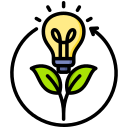
Advanced Water Conservation Systems for Homes
Discover how cutting-edge water conservation systems are transforming residential water usage. As concerns about environmental sustainability and water scarcity grow, innovative solutions for managing household water consumption have become more essential than ever. Advanced systems not only help you save money but also empower homeowners to contribute to a greener planet by reducing unnecessary water waste. This page delves into the latest technologies and strategies in home water conservation, illustrating how modern advancements can make your daily routines more sustainable and responsible without sacrificing comfort or convenience.
Smart Water Monitoring and Leak Detection
Real-time usage tracking empowers homeowners by providing continuous, up-to-the-minute data on their water consumption. With easy-to-read dashboards accessible via smartphones or computers, users can quickly spot unusual spikes that may indicate a problem, such as a hidden leak or excessive use by a particular appliance. Not only does this heighten awareness, but it also encourages behavioral changes that result in long-term savings and more mindful water use. By understanding exactly when and how water is being consumed, individuals are better equipped to make informed decisions that benefit both their finances and the environment.
Automated leak detection systems utilize advanced sensors and machine learning algorithms to identify leaks the instant they occur. These systems continuously monitor household plumbing, recognizing unusual flow patterns that could indicate a burst pipe or dripping faucet. When a leak is detected, the system can automatically shut off the water supply or send instant alerts to the homeowner’s phone, mitigating potentially serious damage. This level of automation helps to prevent costly repairs and massive water loss stemming from undetected leaks, making it an integral component of any advanced home conservation strategy.
Water usage analytics take smart home water management a step further by providing comprehensive reports and predictive insights. By aggregating and interpreting usage data, these platforms offer recommendations tailored to your household’s habits, pinpointing opportunities for greater efficiency. These analytics may highlight inefficient appliances, suggest modifications to daily routines, or even forecast monthly bills, arming homeowners with the knowledge to take preemptive conservation action. With analytic-driven guidance, optimizing your water use becomes less guesswork and more precision science, ultimately supporting a more sustainable lifestyle.
Greywater Recycling Solutions
In-Home Greywater Processing Units
In-home greywater processing units are compact systems designed to treat water collected from bathroom sinks, bathtubs, and washing machines. Through filtration and advanced treatment, these units remove impurities and pathogens, making the water safe for reuse in applications such as toilet flushing and subsurface irrigation. By installing an in-home processing unit, families can significantly reduce their freshwater usage and utility bills. The treated water is odor-free and meets high safety standards, ensuring convenience and reliability without compromising health.
Garden Irrigation with Greywater
Greywater systems can be linked directly to outdoor irrigation setups, channeling lightly used household water into gardens and landscaping. By delivering nutrient-rich water to plants, these systems both conserve valuable fresh water and promote garden vitality. Advanced distribution networks ensure that water is applied where it is needed most, minimizing runoff and evaporation. Using greywater for irrigation has proven to be a practical solution for maintaining lush home gardens without depleting limited municipal resources, especially in regions where drought is an ongoing concern.
Toilet Flushing Integration
A major contributor to domestic water usage, toilets present a prime opportunity for conservation through greywater integration. Modern systems seamlessly redirect treated greywater to toilet cisterns, supplying each flush with recycled water rather than costly potable supply. These integrations operate automatically and invisibly, ensuring that homeowners experience uninterrupted service with reduced overall consumption. Over the course of a year, this simple swap can yield significant savings and alleviate pressure on local water infrastructure.
Roof Catchment Systems
Roof catchment systems are engineered to capture rainwater runoff from rooftops, channeling it through a series of gutters and downspouts into storage tanks. These systems often include debris filters and first-flush devices to maintain water quality. Collected rainwater can then be used for activities such as watering lawns, washing cars, or even laundry, depending on local regulations and additional treatment steps. Such systems provide homeowners with a renewable source of water that’s independent of municipal supplies, reducing their environmental impact and water costs.
Advanced Storage and Filtration
Once rainwater is collected, advanced storage and filtration solutions ensure the harvested supply remains clean, safe, and accessible. Modern tanks are constructed from durable, food-grade materials that protect against contamination and algae growth. Integrated filtration units use sediment removal and sometimes UV sterilization to guarantee water is suitable for household use. With automated level sensors and app-based alerts, homeowners are always informed about tank capacities and system status, helping them maximize the utility of every rainfall.
Integration with Home Water Supply
The true power of rainwater harvesting is unlocked when systems are fully integrated with the home’s plumbing. Automatic switching valves direct stored rainwater to specific fixtures, such as garden hose bibs or toilets, reducing dependence on the mains supply. Some advanced setups even provide real-time monitoring, enabling seamless transitions based on availability and usage patterns. This integration provides a robust and flexible approach that guarantees water conservation benefits without inconveniencing residents or sacrificing water pressure and quality.
